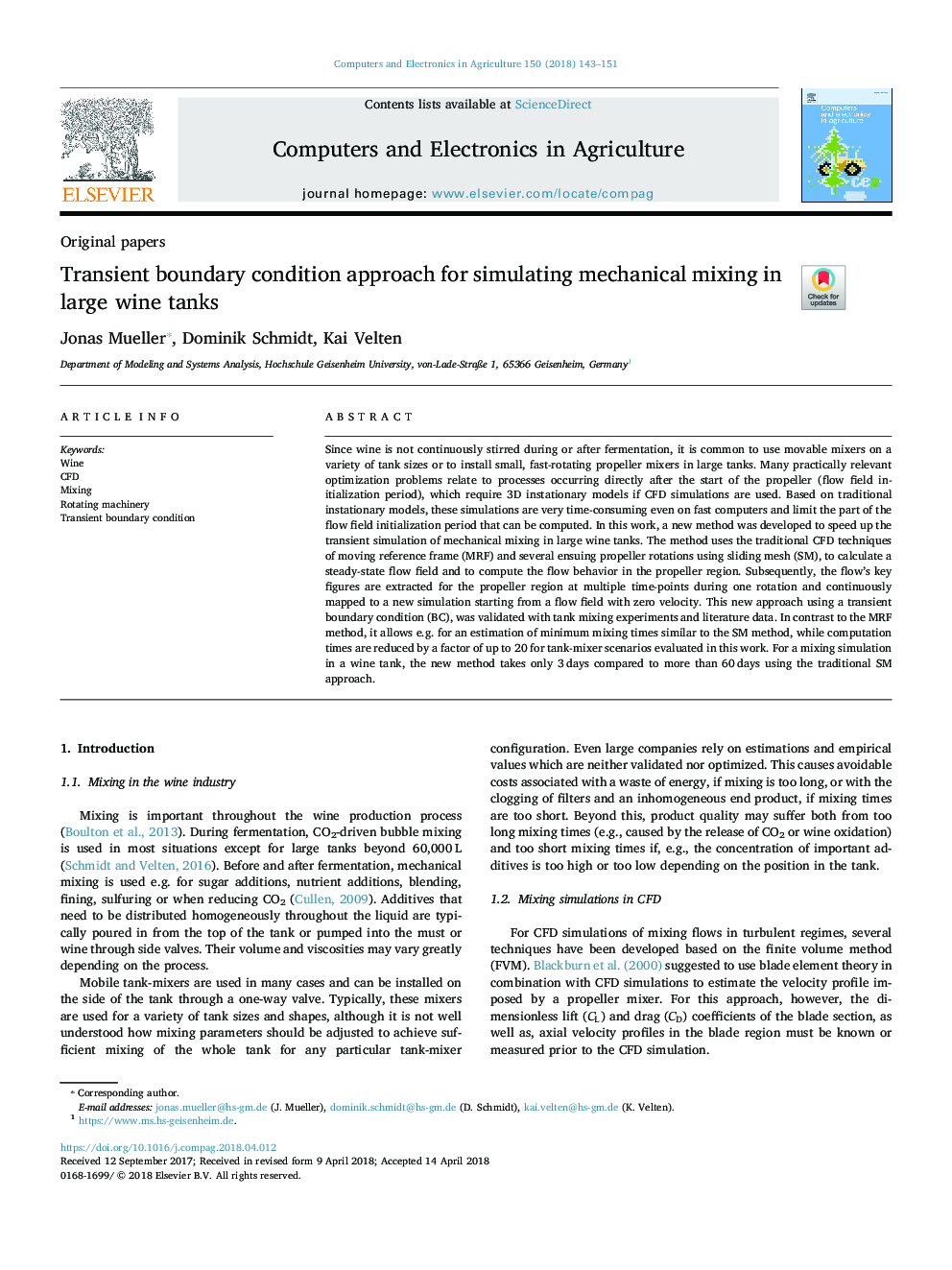| Article ID | Journal | Published Year | Pages | File Type |
|---|---|---|---|---|
| 6539368 | Computers and Electronics in Agriculture | 2018 | 9 Pages |
Abstract
Since wine is not continuously stirred during or after fermentation, it is common to use movable mixers on a variety of tank sizes or to install small, fast-rotating propeller mixers in large tanks. Many practically relevant optimization problems relate to processes occurring directly after the start of the propeller (flow field initialization period), which require 3D instationary models if CFD simulations are used. Based on traditional instationary models, these simulations are very time-consuming even on fast computers and limit the part of the flow field initialization period that can be computed. In this work, a new method was developed to speed up the transient simulation of mechanical mixing in large wine tanks. The method uses the traditional CFD techniques of moving reference frame (MRF) and several ensuing propeller rotations using sliding mesh (SM), to calculate a steady-state flow field and to compute the flow behavior in the propeller region. Subsequently, the flow's key figures are extracted for the propeller region at multiple time-points during one rotation and continuously mapped to a new simulation starting from a flow field with zero velocity. This new approach using a transient boundary condition (BC), was validated with tank mixing experiments and literature data. In contrast to the MRF method, it allows e.g. for an estimation of minimum mixing times similar to the SM method, while computation times are reduced by a factor of up to 20 for tank-mixer scenarios evaluated in this work. For a mixing simulation in a wine tank, the new method takes only 3â¯days compared to more than 60â¯days using the traditional SM approach.
Keywords
Related Topics
Physical Sciences and Engineering
Computer Science
Computer Science Applications
Authors
Jonas Mueller, Dominik Schmidt, Kai Velten,
